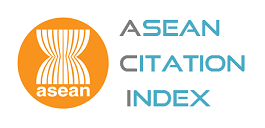OPTIMIZATION OF RED PUMPKIN (Cucurbita moschata) SACCHARIFICATION USING LINEAR CONVOLUTION FOR MULTI-OBJECTIVE FUNCTIONS
Keywords:
glucoamylase, pumpkin starch, rapidly digestible starch, reducing sugar, slowly digestible starchAbstract
This study investigates optimizing the saccharification process to obtain desired levels of rapidly digestible starch (Y1), slowly digestible starch (Y2), and resistant starch (Y3) in red pumpkin (Cucurbita moschata). Saccharification involves treating liquefied starch with glucoamylase to convert it into glucose. The experiment examines the influence of glucoamylase concentration, temperature, and hydrolysis time on these starch fractions. A central composite design with a multi-objective function was employed to create a multivariate model. The linear convolution method, along with the convolution function gradient climbing method, was used to analyze multi-objective data and identify optimal solutions based on experimental results. The established linear convolution function equation demonstrated a high degree of accuracy (R² = 0.9846, CV = 0.71%) and statistical significance (p < 0.0001). The chosen convolution function (Yconvmax = 301.312 mg/g) yielded values close to the desired ranges for Y1min, Y2max, and Y3max. These values translated to Y1 = 489.390 mg/g, Y2 = 151.236 mg/g, and Y3 = 357.348 mg/g under the corresponding experimental conditions: glucoamylase concentration (X1) of 119.384 U/ml, temperature (X2) of 57.051°C, and hydrolysis time (X3) of 179.890 minutes.











